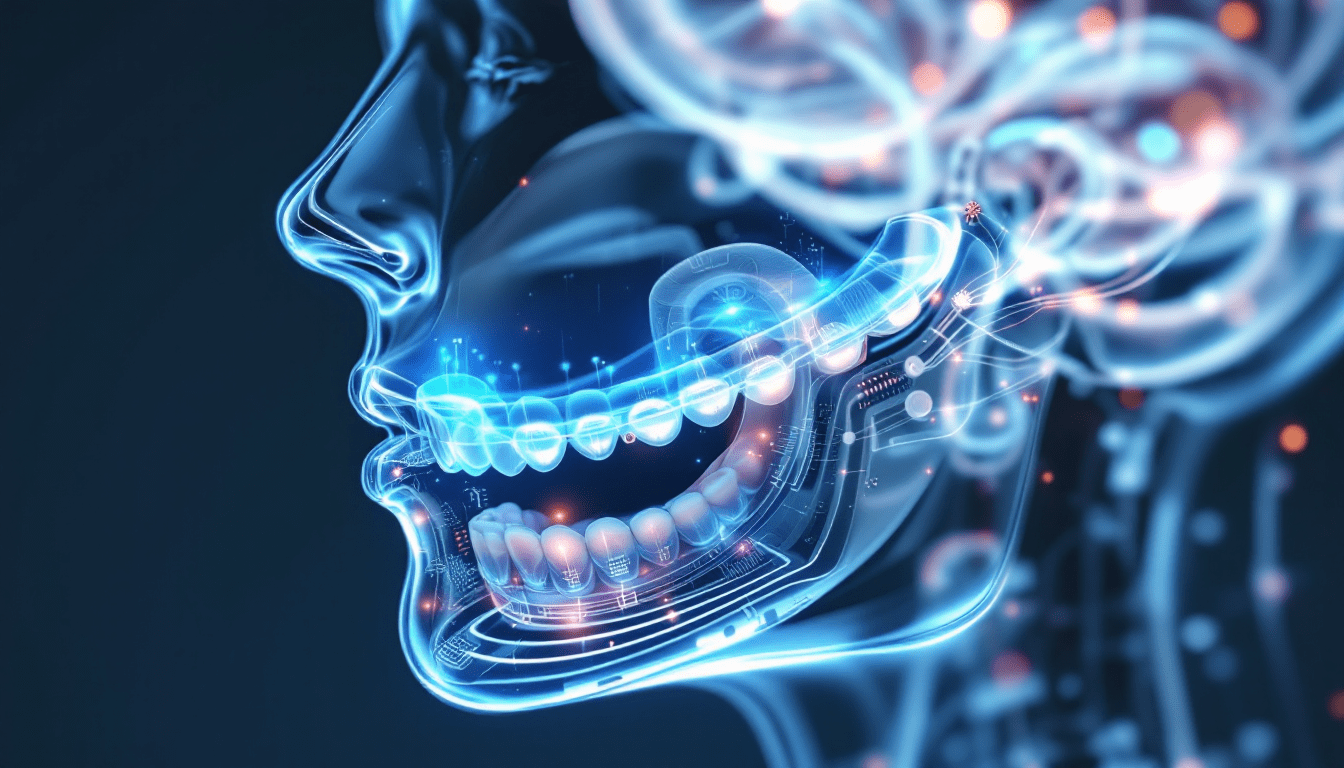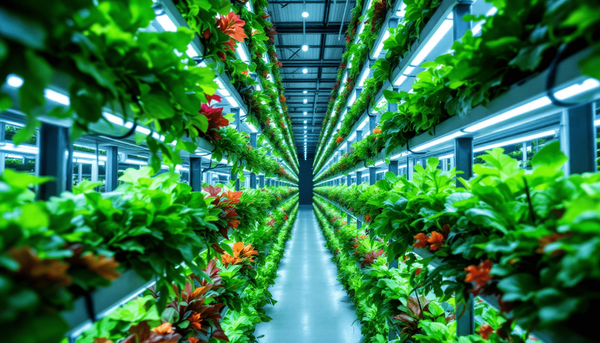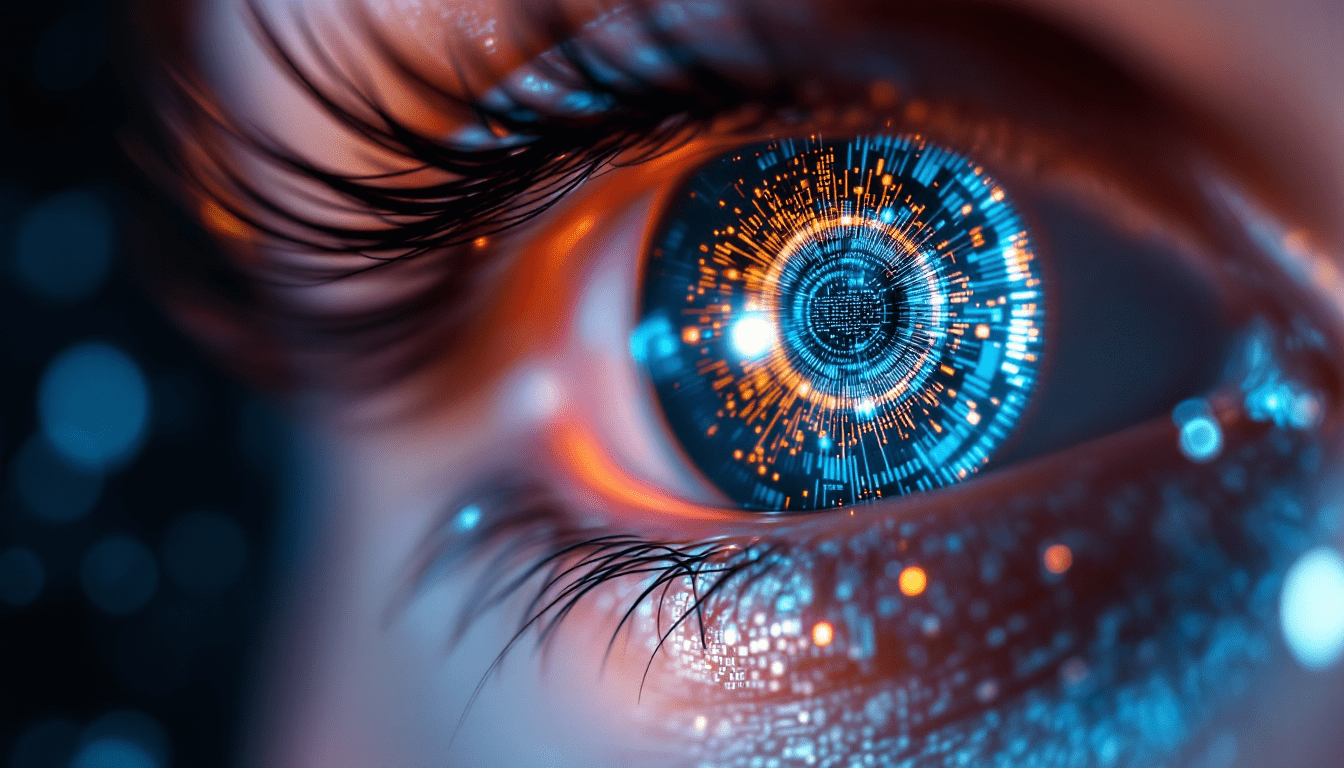Digital Taste
Digital taste technology would enable flavour transmission across the internet through electrical tongue stimulation and synchronised chemical release, revolutionising remote dining, medical treatment, and entertainment whilst creating entirely new sensory experiences impossible in nature.

The human tongue perceives merely five basic tastes—sweet, sour, salty, bitter, and umami—yet from these rudimentary sensations emerges the infinite complexity of flavour. Digital taste technology seeks to hijack this biological system, creating artificial gustatory experiences through electrical stimulation, chemical synthesis, and neurological manipulation. This extraordinary ambition would enable transmission of flavours across the internet, storage of taste in databases, and creation of entirely novel gustatory sensations impossible in nature.
The Neurological Architecture of Digital Flavour
Understanding digital taste requires first comprehending the biological machinery of gustation. When molecules contact taste receptors on the tongue's papillae, they trigger electrochemical cascades generating neural signals. These signals travel via the glossopharyngeal and facial nerves to the nucleus of the solitary tract in the brainstem, then onwards to the thalamus and gustatory cortex. Crucially, taste perception involves not merely the tongue but extensive olfactory input—the retronasal smell contributing up to 80% of perceived flavour.
Digital taste systems must therefore stimulate multiple sensory pathways simultaneously. The breakthrough approach involves a dual-pronged strategy: direct electrical stimulation of taste nerves combined with controlled release of aerosolised compounds for olfactory engagement. British researchers at the University of Sussex have demonstrated proof-of-concept devices delivering precise electrical pulses to the tongue whilst simultaneously releasing programmed sequences of volatile organic compounds near the nasal passages.
The electrical component employs what scientists term "transcutaneous electrical nerve stimulation" or TENS, adapted for oral application. Silver electrodes positioned against the tongue deliver carefully calibrated square wave pulses at frequencies between 20 and 1,000 hertz. The frequency determines perceived taste quality—low frequencies around 50 hertz generate sour sensations, whilst higher frequencies approaching 400 hertz create sweet perceptions. Amplitude modulation controls intensity, with voltages ranging from 20 to 180 microvolts ensuring safety whilst achieving noticeable gustatory effects.
The challenge lies in creating natural-feeling taste progressions. Biological taste follows complex temporal patterns—an initial burst followed by adaptation and lingering aftertastes. Digital systems must replicate these dynamics through sophisticated waveform engineering. Cambridge neuroscientists have developed "taste envelopes" modelling attack, decay, sustain, and release phases borrowed from audio synthesis. These envelopes shape electrical stimulation patterns, creating convincing taste experiences evolving naturally over time.
Molecular Synthesis and Chemical Delivery Systems
Whilst electrical stimulation handles basic taste categories, authentic flavour requires aromatic compounds reaching olfactory receptors. Digital taste devices incorporate miniaturised chemical delivery systems—essentially programmable perfume dispensers operating at microscopic scales. These systems store concentrated flavour compounds in sealed cartridges, releasing precise quantities through piezoelectric valves controlled by microprocessors.
The storage challenge proves formidable. A comprehensive flavour library requires thousands of distinct compounds—from simple esters producing fruity notes to complex thiols creating savoury characteristics. Each compound demands specific storage conditions preventing degradation. British chemical engineers have developed multichamber cartridges maintaining different temperature and atmospheric conditions within a volume smaller than a matchbox. Nitrogen-flushed chambers preserve volatile compounds whilst refrigerated sections store heat-sensitive molecules.
Delivery timing achieves critical importance. The retronasal olfactory pathway activates during exhalation, requiring synchronisation with breathing patterns. Wearable devices monitor respiration through embedded accelerometers, timing compound release for optimal perception. The quantity released—measured in parts per billion—must account for individual sensitivity variations. Machine learning algorithms calibrate delivery based on user feedback, personalising the experience through iterative refinement.
Recent Oxford innovations incorporate microencapsulation technology borrowed from pharmaceutical research. Flavour compounds enclosed within polymer shells measuring 10-50 micrometres remain stable until triggered by specific stimuli—pH changes, temperature, or ultrasonic pulses. This approach enables pre-loading of complex flavour profiles, reducing real-time computational requirements whilst improving temporal precision.
Signal Processing and Flavour Encoding Protocols
Converting flavours into transmittable digital signals demands sophisticated encoding schemes. The emerging standard, developed by the British Institute of Food Science and Technology, employs hierarchical data structures capturing multiple flavour dimensions. Primary taste intensities encode as 8-bit values from 0-255. Secondary aromatic profiles utilise spectral representations similar to audio compression, with frequency components corresponding to different chemical families.
The protocol accommodates temporal evolution through keyframe animation techniques. Critical flavour moments—initial impact, peak intensity, finish—define keyframes with interpolation generating smooth transitions. Compression algorithms exploit psychogustatory masking, removing imperceptible flavour components similarly to how MP3 encoding eliminates inaudible frequencies. Typical flavour files compress to 50-200 kilobytes for simple tastes, whilst complex dishes requiring multiple sequential flavours might reach several megabytes.
Transmission across networks introduces latency considerations. Unlike audio or video where buffering proves acceptable, taste experiences demand real-time delivery synchronised with consumption actions. Quality-of-service protocols prioritise taste data packets, ensuring consistent delivery even across congested networks. Error correction becomes crucial—a corrupted flavour packet could generate nausea or disgust rather than intended sensations.
British computer scientists have proposed blockchain-based flavour authentication systems preventing tampering or counterfeiting. Digitally signed flavour profiles would guarantee authenticity, particularly valuable for premium products like wines or speciality foods. Smart contracts could enforce flavour licensing, with micropayments triggered per taste experience—creating entirely new economic models for the food industry.
Hardware Architecture and Device Implementation
Practical digital taste devices must balance sophistication with usability. Current prototypes resemble elaborate dental retainers, worn against the palate with electrode arrays contacting the tongue. Miniaturisation remains the paramount challenge—integrating processors, batteries, chemical cartridges, and wireless connectivity within a comfortable oral appliance.
The most promising designs employ flexible printed circuit boards conforming to oral anatomy. Conductive polymers replace rigid metal electrodes, improving comfort whilst maintaining electrical performance. Power management proves critical; thermocells harvesting energy from temperature differentials between the mouth and ambient environment supplement tiny lithium batteries. Wireless charging through inductive coupling enables overnight recharging without removing the device.
Safety considerations dominate design decisions. All materials must demonstrate biocompatibility, resisting bacterial colonisation whilst avoiding allergic reactions. Failsafe circuits prevent excessive electrical stimulation even during malfunction. Chemical cartridges incorporate multiple containment barriers preventing accidental release of concentrated compounds. British medical device regulations would require extensive clinical trials demonstrating long-term safety before consumer deployment.
Manufacturing costs currently prohibit widespread adoption. Laboratory prototypes cost approximately £15,000 each, primarily due to custom microfabrication requirements. However, mass production using techniques adapted from semiconductor manufacturing could reduce costs below £500 per device. Disposable chemical cartridges would generate recurring revenue, similar to printer ink business models.
Revolutionary Applications Transforming Human Experience
Digital taste technology would fundamentally revolutionise numerous industries, beginning with remote dining experiences. Michelin-starred chefs could broadcast flavour alongside cooking demonstrations, allowing home viewers to taste dishes in real-time. Live sporting events could transmit stadium food flavours to remote spectators. Wine tastings could occur simultaneously across continents, with sommeliers guiding participants through identical sensory experiences despite geographic separation.
Medical applications appear particularly transformative. Patients with dysgeusia—taste dysfunction affecting millions following chemotherapy or COVID-19—could receive corrective taste stimulation restoring normal perception. Diabetics could experience sweet sensations without consuming sugar, potentially improving dietary compliance. Eating disorder treatment could employ controlled taste exposure therapy, gradually reintroducing problematic flavours in safe, therapeutic contexts.
The entertainment industry would gain an entirely new sensory dimension. Films could incorporate taste tracks alongside soundtracks, with flavours enhancing narrative immersion. Video games could punish failure with bitter tastes whilst rewarding success with sweetness. Virtual reality experiences would achieve unprecedented realism through multisensory integration including gustation. British creative industries, already global leaders in gaming and media production, could pioneer this new medium.
Educational applications could revolutionise culinary training. Students could experience thousands of ingredients and preparations without physical samples. Chemistry lessons could safely demonstrate how molecular structures relate to taste. History classes could recreate ancient Roman banquets or medieval feasts, making the past tangible through flavour. Cultural exchange programmes could share traditional cuisines digitally, promoting understanding through gustatory experience.
Psychological and Social Implications
The ability to digitally manipulate taste raises profound psychological questions. Flavour memories powerfully evoke emotions and experiences—Proust's madeleine representing literature's most famous example. Digital taste could become a therapeutic tool, helping dementia patients recover memories through familiar flavours. Conversely, it could enable harmful applications like taste-based addiction or aversion conditioning.
Social dining rituals would transform dramatically. Shared meals across distances could maintain family connections despite separation. Business lunches could occur virtually with full gustatory presence. Dating applications could incorporate taste preferences, matching individuals based on flavour compatibility. The communal aspects of eating—fundamental to human culture—would persist despite physical separation.
Privacy concerns emerge regarding flavour data collection. Taste preferences reveal intimate information about health, culture, and socioeconomic status. Companies could build detailed profiles predicting purchasing behaviour or manipulating desires through targeted taste advertising. British data protection frameworks would require updating to address gustatory information as personal data deserving protection.
The authenticity of experience becomes philosophically complex. Would digitally transmitted champagne taste constitute genuine champagne experience? Legal frameworks around protected designations of origin would require reconsideration. The wine industry, particularly, faces existential questions about whether terroir—the unique taste imparted by specific geography—survives digital translation.
Technological Barriers and Research Frontiers
Several fundamental obstacles impede digital taste realisation. Individual genetic variation in taste receptor expression means identical stimulation produces different perceptions across people. The TAS2R38 gene, for instance, determines bitter sensitivity, with some individuals experiencing intense bitterness from compounds others cannot detect. Personalisation algorithms must account for these genetic differences, potentially requiring DNA testing for optimal calibration.
The "uncanny valley" phenomenon observed in robotics likely applies to digital taste. Nearly-but-not-quite accurate flavours might trigger disgust responses stronger than obviously artificial tastes. Achieving sufficient fidelity to avoid this valley demands understanding of subtle flavour components currently beyond scientific characterisation. British food scientists are employing advanced mass spectrometry and gas chromatography to identify previously unknown flavour molecules contributing to authenticity.
Temporal synchronisation between electrical and chemical stimulation presents ongoing challenges. The tongue responds to electrical stimulation within milliseconds whilst aromatic compounds require seconds to reach olfactory receptors. This temporal mismatch creates unnatural taste experiences unless carefully compensated through predictive algorithms. Machine learning models trained on thousands of taste experiences gradually improve synchronisation, though perfect alignment remains elusive.
Battery technology constrains device capabilities. Current lithium batteries provide insufficient energy density for all-day operation whilst maintaining comfortable device dimensions. British materials scientists are exploring supercapacitor integration and wireless power transmission to address energy limitations. Novel energy harvesting approaches—perhaps exploiting jaw movement during chewing—could supplement traditional batteries.
Environmental and Economic Transformation
Digital taste could dramatically reduce food waste by allowing consumers to "pre-taste" products before purchase. Supermarkets could offer taste samples without opening packages, maintaining product integrity whilst enabling informed decisions. Restaurant patrons could sample dishes before ordering, reducing disappointment and waste. The global food waste crisis—responsible for 8-10% of greenhouse gas emissions—could diminish substantially.
Agricultural implications appear profound. Farmers could digitally transmit crop flavours to buyers worldwide, enabling quality assessment without physical sampling. Breeding programmes could accelerate by rapidly screening flavour profiles across thousands of varieties. Rare or endangered flavour sources—like certain heritage fruits or wild herbs—could achieve digital preservation, maintaining gustatory biodiversity even if physical specimens disappear.
The flavour industry, currently worth £20 billion globally, would undergo complete transformation. Instead of shipping physical flavour compounds, companies would license digital flavour profiles. This dematerialisation would eliminate transportation emissions whilst enabling instant global distribution. British flavour houses, leveraging the nation's strong chemical industry heritage, could dominate this new digital marketplace.
Economic disruption would affect numerous sectors. Restaurants might separate food's nutritional and gustatory functions, serving healthy but bland base meals with spectacular digital flavour overlays. Subscription services could offer monthly flavour collections. Insurance companies might cover digital taste devices as preventive health tools, reducing diet-related disease costs. The British economy, with its strong service sector and creative industries, appears well-positioned to capitalise on these shifts.
Britain's Strategic Opportunity
Britain possesses unique advantages in the race towards digital taste supremacy. Our world-renowned food science programmes at Reading, Leeds, and Nottingham universities provide crucial expertise. The Francis Crick Institute's neuroscience capabilities could unravel taste perception's remaining mysteries. Our regulatory framework, balanced between innovation encouragement and consumer protection, creates an ideal development environment.
The NHS could pioneer medical applications, with digital taste devices prescribed for various conditions. British retailers like Waitrose and Marks & Spencer, known for food innovation, could trial consumer applications. The BBC might broadcast taste-enhanced programming, creating global demand for British-developed technology. These first-mover advantages could establish Britain as the digital taste capital.
International collaboration appears essential. Japanese expertise in miniaturisation, American venture capital, and European food traditions could complement British scientific capabilities. However, maintaining technological leadership requires substantial investment. Government funding for digital taste research, similar to quantum computing initiatives, could accelerate development whilst ensuring British firms capture value from resulting innovations.
The Horizon of Human Sensory Experience
Digital taste represents more than technological achievement—it fundamentally expands human sensory bandwidth. Throughout history, we've remained confined to experiencing flavours through physical consumption. Digital taste breaks this limitation, enabling flavour experiences limited only by imagination. Entirely novel tastes, impossible in nature, could emerge from creative manipulation of electrical and chemical signals.
The technology's maturation could herald an age where sharing sensory experiences becomes trivial. A grandmother's secret recipe could transmit perfectly to descendants centuries hence. Astronauts could taste Earth foods whilst exploring distant planets. The bedridden could experience gourmet meals despite dietary restrictions. These applications transform digital taste from clever technology into profound human enhancement.
Yet dangers lurk within such capability. Malicious actors could weaponise taste, creating traumatic flavour experiences. Addiction potential seems significant—digital tastes could prove more compelling than natural flavours through optimisation for neurological impact rather than nutrition. Society must carefully consider regulatory frameworks preventing abuse whilst enabling beneficial applications.
The ultimate achievement would involve direct neural interface, bypassing tongue and nose entirely. Brain-computer interfaces could inject taste sensations directly into the gustatory cortex, achieving perfect fidelity without physical devices. This approach, whilst decades distant, represents digital taste's logical endpoint—complete virtualisation of flavour experience. Whether humanity should pursue such capability remains an open question, but our species' relentless curiosity suggests we inevitably will.
Britain stands poised to lead this gustatory revolution. Our scientific excellence, creative industries, and regulatory sophistication provide the foundation. The question remains not whether digital taste will emerge, but whether Britain will shape its development. The choices made today regarding research investment, regulatory frameworks, and international collaboration will determine whether London becomes the global capital of digital flavour or merely another participant in a revolution led elsewhere. The tongue, humanity's ancient arbiter of flavour, awaits its digital transformation.



